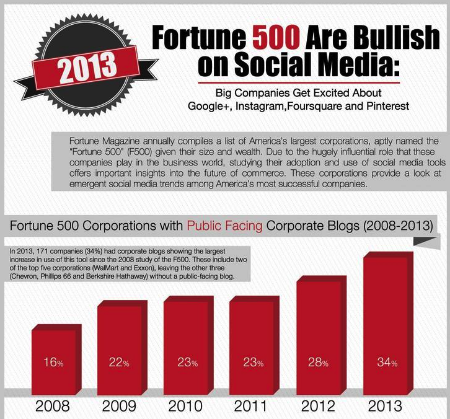|
How to Rock Content Marketing World 2013 – Six Ways
 |
Joe Pulizzi rocking his talk at Content Marketing World 2012
There’s some serious momentum growing in the digital marketing world and companies world-wide are scrambling to figure out one of the most important pieces for success: content.
What better way to close the gap between early maturity model stages and a path to greater profitability than learning from top experts who have already “been there, done that”? Content Marketing World coming up Sept 9-11 will provide the answers many digital marketers are looking for.
Like anything of value, attending conferences is an investment and #CMWorld is no different. If you’ve been thinking about how to advance your organization’s ability to plan, create, market, measure and govern content in your organization, then I can’t think of a better event.
While Joe Pulizzi and his team do everything they can to make the event an incredible experience, here are 6 tips for you to boost the ROI of your conference investment even further, whether you are attending, speaking or sponsoring.
1. Rock The Mic Before, During & After – Optimize Your Presentation Experience
Failure to plan is a plan to fail. This is easily one of the most basic, yet impactful things you can do to get more value out of a conference. While Content Marketing World is one of the best organized events I’ve ever been to, it’s important to understand you are in control of your experience. Especially if you plan things out ahead of time. Allow for adaptation of course, but setting goals and outlining steps beforehand will make speaking at an event an entirely new marketing experience.
Before the event:
- Write headlines, descriptions, tags and make trackable short URLs
- Pre-write tweets, updates and decide on a hashtag
- Submit your session to event listing sites, create events on Facebook and LinkedIn
- Create a contest or buzz around your presentation to inspire others to tell their networks
- Issue an optimized press release
- Schedule interviews with media attending the event and/or local media
- Connect with other speakers in advance
- Create a teaser for your presentation
- Announce your event attendance through email and your social channels
- When you meet people before your presentation, don't be shy about sharing when you are speaking
- Create a check-in notice on Foursquare inviting people to attend your session
During the event:
- Create content the audience can participate with. I like to take photos of the audience and post to our Facebook page so they can tag themselves.
- Use tweetable, shareable content in your presentation
- Give something away to motivate desired behaviors like asking questions
- Always include a report or fulfillment piece in your thank you page
- Have someone on your team monitoring tweets and buzz during your presentation. Interact as appropriate
After the event:
- Curate buzz about the presentation into a blog post and/or newsroom post
- Follow up on questions asked and fulfillment deliverables
- Connect with new contacts through appropriate social channels
- Thank the conference for having you
- If you were on a panel, thank the panelists and moderator
- Thank any livebloggers that covered your session
- Use media coverage from the event in your newsroom, corporate email and other communications
2. Sing for More Than One Audience - Identify Networking Targets
Most people I talk to evaluate conference attendance purely by how many leads they went home with. The frequent disappointment based on that one dimension is a result of a copious amounts of short term thinking and overconfidence. It’s a competitive world out there and if you want to make it to the big stage, you’ll need to hustle.
I always like to say that I can make money 5 ways when I attend conferences and that starts by identifying your networking targets. What business goals can you achieve from connecting at an event where so many likeminded, interested and capable people are present? Set goals for those targets: How many qualified prospects, marketing partners, vendors to outsource to and job candidates will you meeting? Each day, tally them up and plan how you will follow up.
Common event networking targets and objectives:
- Recruiting
- Collecting competitive intelligence
- Vendor and consultant sourcing
- Partner sourcing
- Prospecting for new customers
3. Become a Better Marketing Musician By Learning From Others – Plan to Get Smarter
Before you ever attend a conference, think about which sessions will you attend and how will you capture information? Notes, photos, video (where allowed) When meeting new people, discuss the sessions with them. Compare notes – it's a great way to network and to get other opinions. Before the conference, make a grid or a plan for which specific sessions you'll be attending. Often times, there is not much time between sessions and the difference between getting a good seat and standing room only can be a matter of minutes.
- You can benefit from understanding how the information is presented as much as from the actual tips. The format, sequence, design and presentation of information that connects is a model you can leverage for your own purposes: whether it's speaking at a conference or event yourself or communicating and persuading people internally.
- Planning your conference session attendance is essential. Think of how many sessions will you attend and how will you capture the information presented. Will you take notes on an iPad, laptop or (gasp) on paper? Will you take photos or video (where allowed)? Do you know where to get a copy of the speakers' presentations? Introduce yourself to speakers and ask them a key question on video so you can review later and share with your team.
- When meeting new people, discuss the sessions with them. Compare notes – it's a great way to network and to get other opinions. Before the conference, make a grid or a plan for which specific sessions you'll be attending. Often times, there is not much time between sessions and the difference between getting a good seat and standing room only can be a matter of minutes and you might miss out on the session entirely because rooms can fill up.
Most people drift from session to session like sheep and sit passively hoping something the speaker says will wake them from the fog of last night’s networking. Other people set goals, and proactively seek sessions, speakers and vendors that will help them fill gaps and expand their knowledge. It’s an intentional effort, not a passive approach that wins when it comes to gaining new knowledge at a conference. Be a rock star attendee and be intentional about how you’ll get smarter.
4. Bootleg the Music – Create, Curate and Amplify Content
When you attend an event like Content Marketing World, you’ll be one of thousands and thousands of marketers who are not able to go. It’s like being able to go to a concert with the best bands. You don’t want to keep all that musical goodness to yourself, do you? While bootlegging performances is usually prohibited at a concert, creating content at a conference is one of the best things you could do for the benefit of your colleagues and customers.
Think about how will you leverage your conference experience to create new content for your company blog, articles, or process documentation? Set goals for how many you'll create each day. The content you capture and create can supply a company blog with numerous posts and show clients, staff and prospective clients that you are on top of what's happening in the industry.
If you have staff attending an event, make it part of their requirements to create content while they are there. At Content Marketing World, you’ll see TopRank’s Alexis Hall, Katie Bresnahan and Susan Misukanis live-blogging away and posting their observations here. This tip alone will turn up the volume on your conference ROI.
Set goals for how many blog posts, articles or other types of content will be created each day of the conference. It doesn't have to be all text – take photos of people, and presentation slides. Take videos where allowed.
- Liveblogging – You can transcribe what the speakers say word for word or just listen for key quotes or pieces of information and make a "list post" around a specific topic. Pre-write an article about the session topic and fill in stats and quotes from the speakers.
- Interviews – Reach out to speakers in advance and collect tips from their presentations as a way to help boost attendance to their session. Shoot video interviews of speakers or other smarties at the conference. Record podcast interviews with the same people. Capture single tips on video from a large number of people and compile into one video. Go to exhibitor booths and ask them for a 30 second pitch on video and compile them. Survey attendees on what they like best, tips they've heard, etc into a compilation video. With video, you might want to get sign-offs. Also, non-speakers may be reluctant.
- Journal – Keep notes and write a summary of key points from the day and publish like a journal entry. Link to other bloggers that are publishing liveblog posts at the same event.
- Curate – Use a tool like storify to curate the buzz of the conference. You don't even need to be at the event to do this if a conference hashtag is used consistently.
- Track Your Own Buzz – If you are speaking, make sure someone from your team is tracking mentions of you, your company and topic on social streams like Twitter, Facebook, LinkedIn and Google+. Monitor any liveblogging of your presentations as well. Give people an incentive to liveblog your sessions too. If anyone liveblogs or livetweets one of my presentations, I will often send them a copy of Optimize. Curate those mentions into a roundup post on your company newsroom.
5. Get Your Demo Tape to the Right People – Amplify the Transfer of Knowledge
When you do make a commitment to capturing content at an event, it’s equally important to consider how those tips, tactics and actionable insights will get out of your head and computer and into the hands of people in your organization that can put them into action.
Think about how will you pass on the information you've acquired to the rest of the team? At TopRank Online Marketing, our staff take the highlights and any specific tactics of use and create presentations which they share with the rest of the team. Knowing you will be required to present the information you are gaining with the team back at the office helps focus on takeaways and practical interpretations of the new information. Here are some handy tips for knowledge transfer:
- Capture: Target specific speakers and sessions. Write questions you want answered and if the presentations do not contain those answers then pursue subject matter expert speakers to ask them directly. Capture information in text, audio, video and image. No one ever comes back from an event thinking they took too many photos. Maybe the wrong photos, but not to many. Also, be aware of conference policies on video and image capture.
- Synthesis: When you formulate questions, have specific applications for your business in mind. When you get the answers, filter the information in a way that will be practical and useful when it is shared – vs. all theoretical. Discuss the information and tips collected with fellow attendees to filter out what's most useful.
- Distribution: Have a plan for how you will present the useful tactics, insights, statistics and case studies with your co-workers, clients and other interested parties. You could write a report, you could create a presentation to give live or via webinar, you could compile video clips and images to narration. Individual tips could be saved on an internal knowledge base blog according to category. You could have a post-conference brown bag lunch discussion or a more formal presentation. There are many different options, but have them in mind before the conference to increase the likelihood they will actually happen and in an effective way.
6. After The Concert, The Real Party Begins – Optimize Your Socializing
Where there's a conference, there's a party. Content Marketing World will be no different. Especially when you consider that Cleveland hosts the Rock and Roll Hall of Fame.
After hours events are exceptional opportunities for conference attendees to relax, network and share information. Make no mistake, post session networking can be an art form. Make a point to relax and have fun, but be clear about objectives and make a goal of attending a dinner each night of the event if possible. Some dinners are a tradition amongst long time friends, some are sponsored by vendors and some are ad hoc events that occur as a result of likeminded individuals wanting to continue the day's discussion.
The formal connections you make during the day can be extended with social conversation after the event. These connections can become some of the most valuable because no matter how smart you are, people want to work with other people they like. After conference networking is a chance to connect with other professionals on a more personal or at least relaxed level.
Just remember, what happens in Cleveland, will absolutely be broadcast on Twitter, Vine, Instagram, Facebook and maybe even Google+
Are You Ready to Rock?
Even if you do 2 or 3 of these things, you’ll be able to multiple the value from attending a conference like Content Marketing World. These tips are applicable to any event and as the demand for more content grows, why not take advantage of the opportunities right in front of us? Here are details on the event.
If you have any questions about Content Marketing World, or are interested in more tips, please be sure to ask in the comments or email me directly at lee at toprankblog dot com. I hope to see you in September!
|
| |











